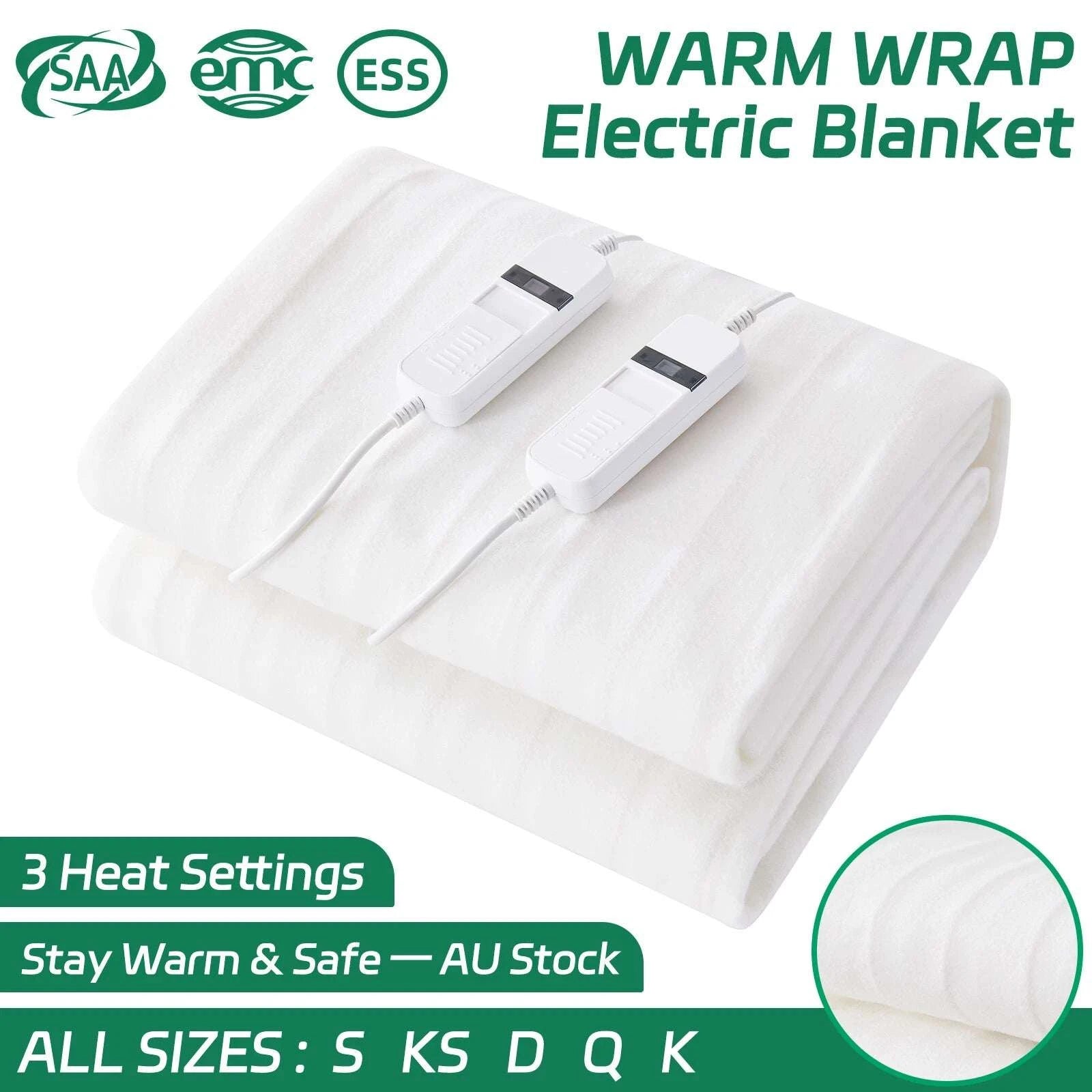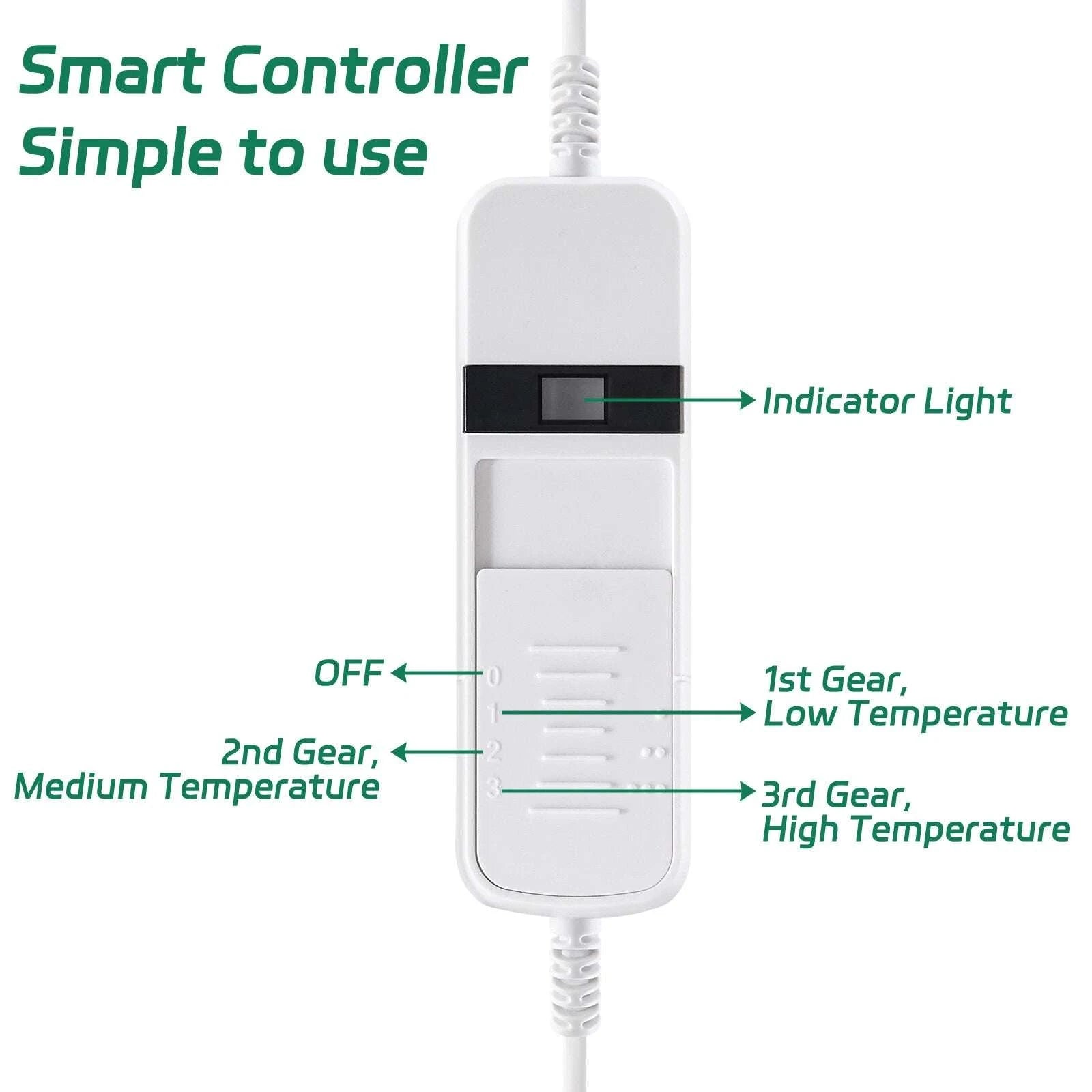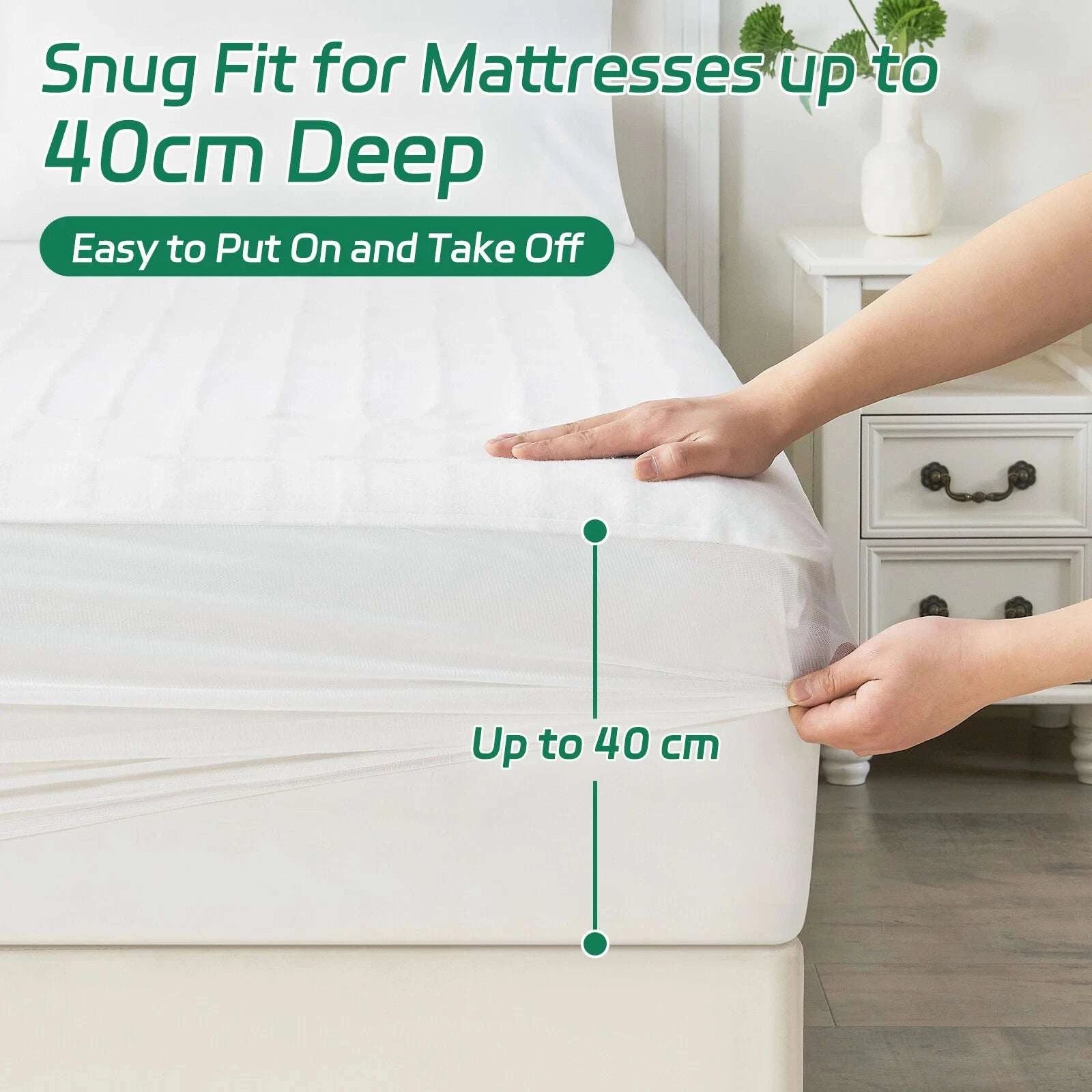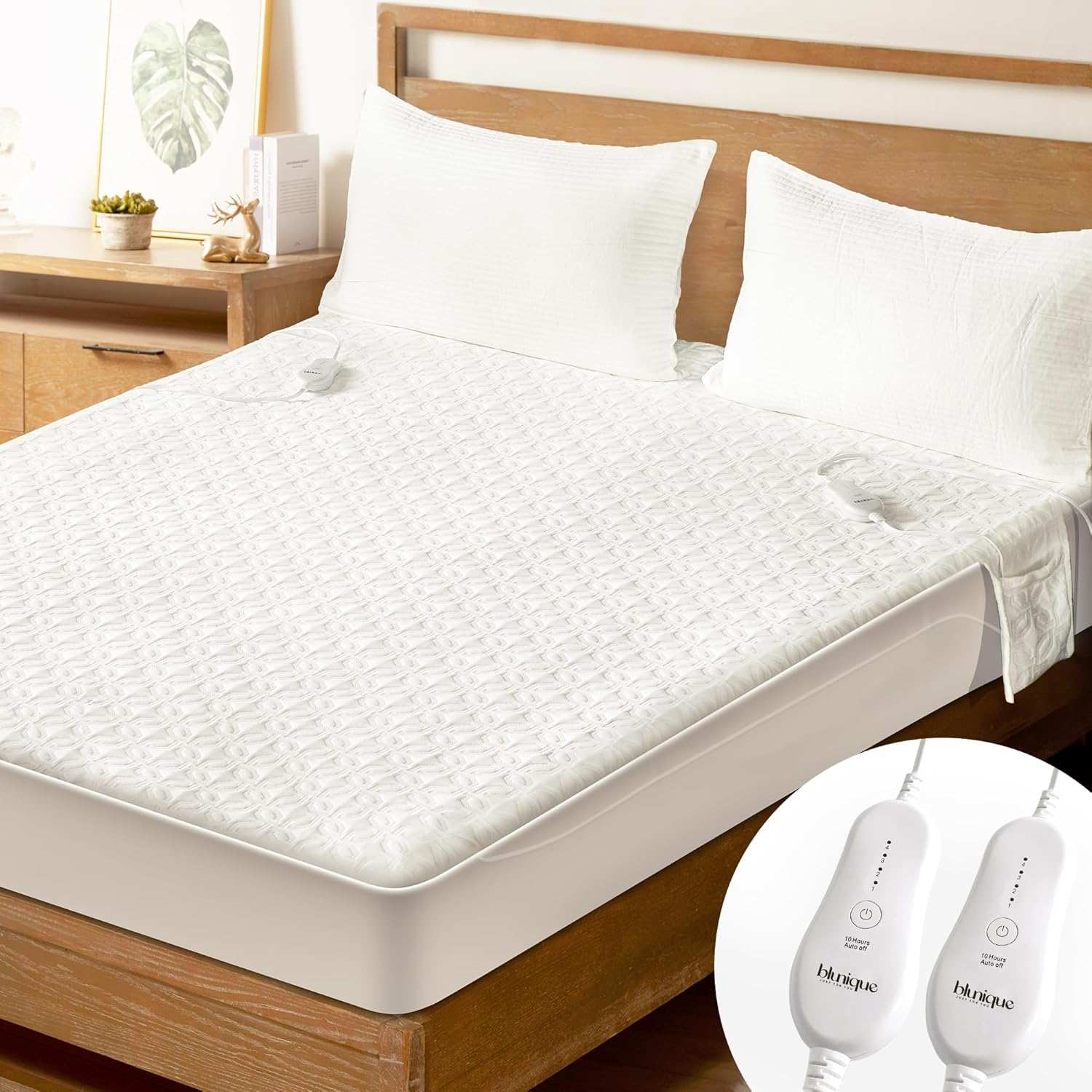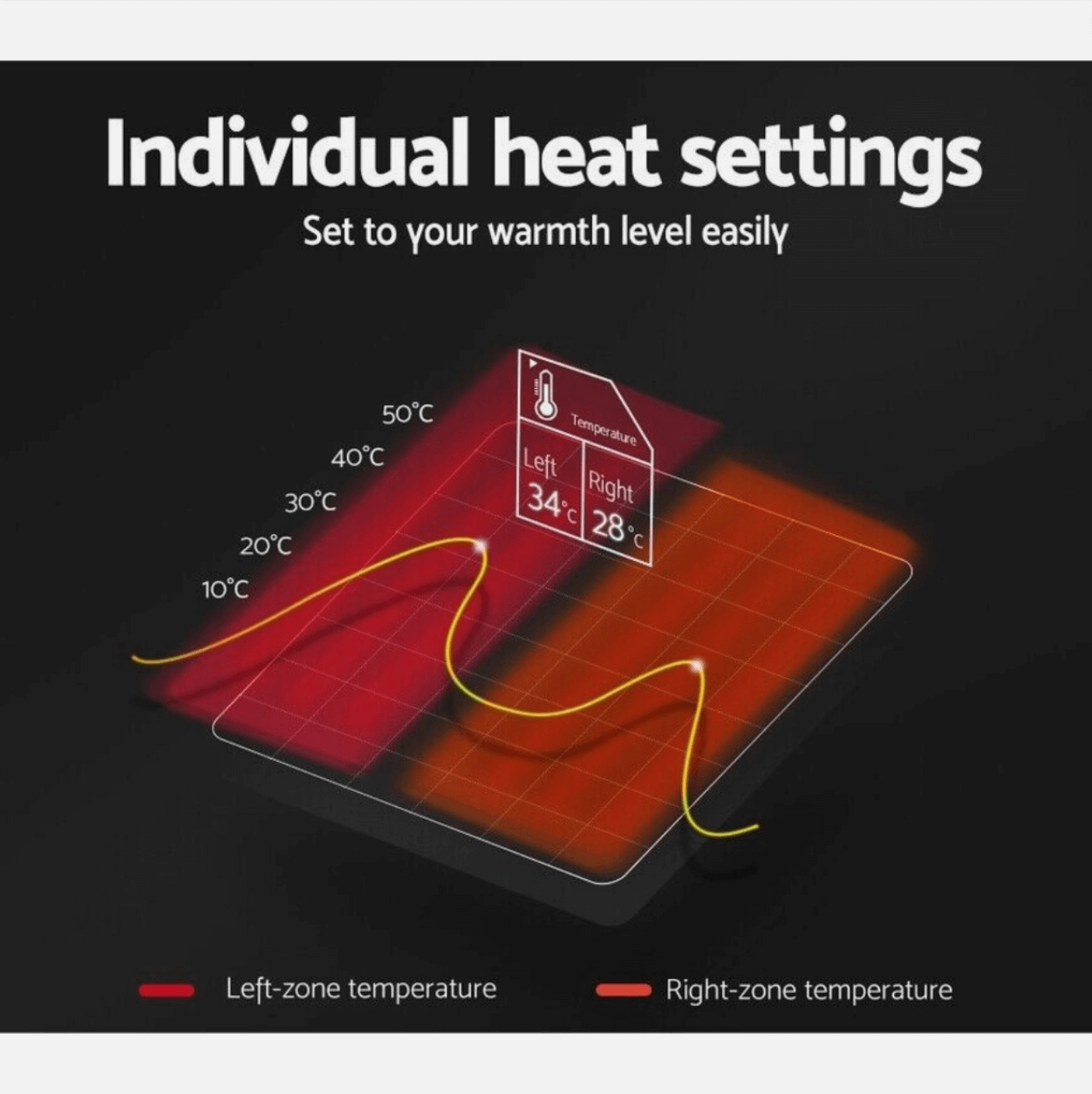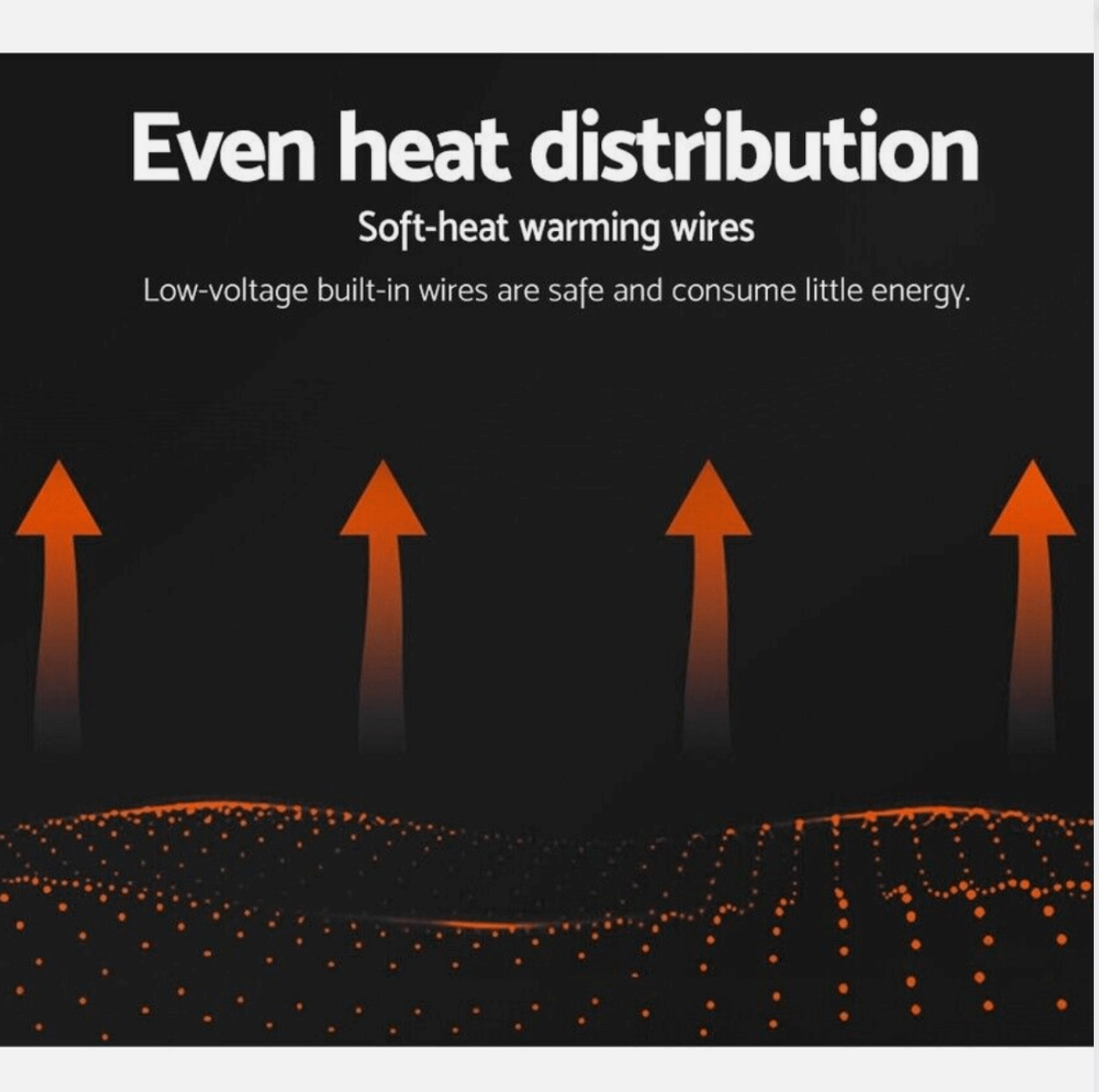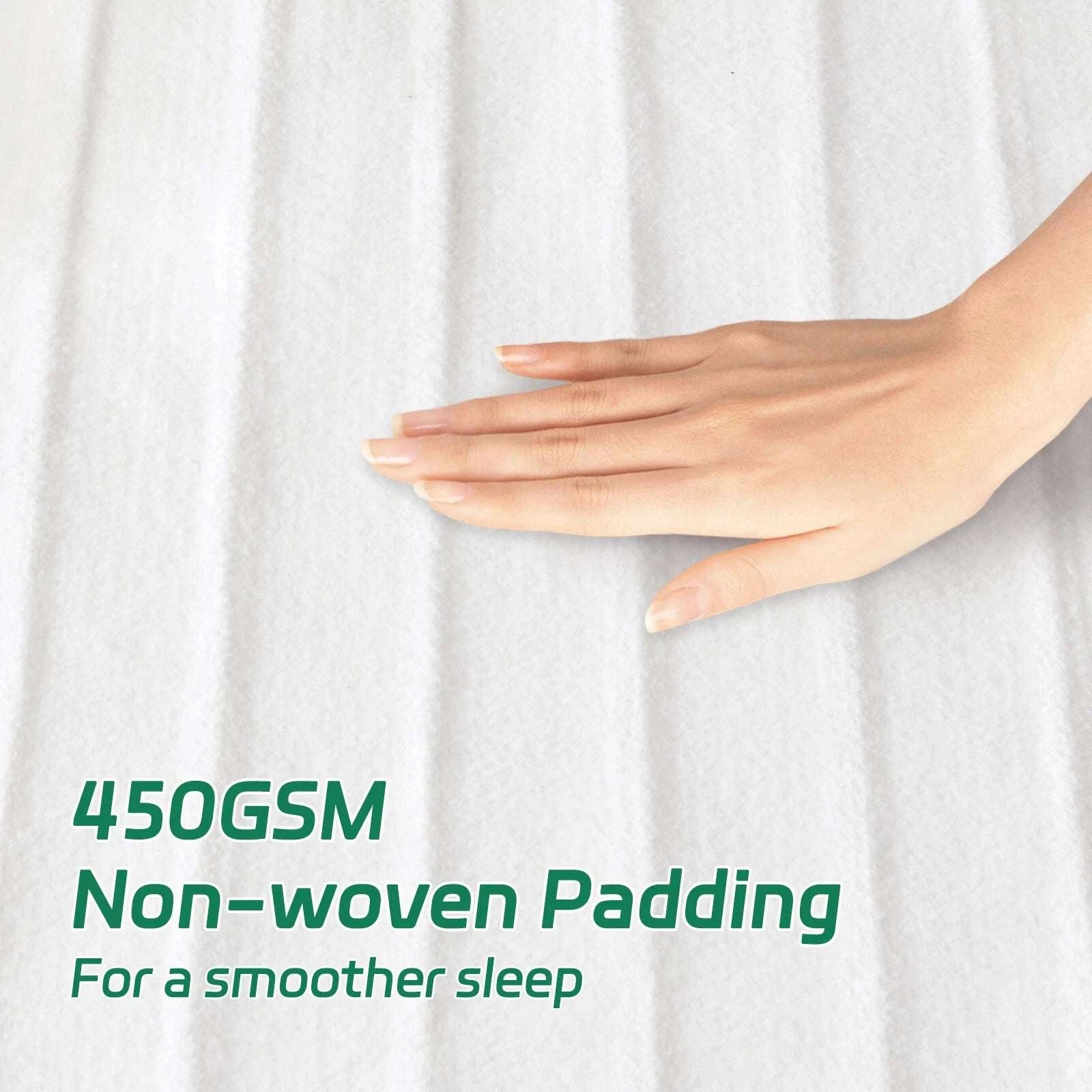Can You Use Electric Blankets with Mattress Toppers?
Complete Safety & Compatibility Guide 2025
One of the most frequently asked questions about electric blankets in Australia is whether they can be safely used with mattress toppers. With the growing popularity of memory foam, latex, and other mattress toppers for enhanced comfort, many Australians want to know if they can enjoy both the benefits of their topper and the warmth of an electric blanket.
The short answer is: it depends on several critical factors including the type of mattress topper, the electric blanket design, thickness considerations, and proper installation. This comprehensive guide, based on Australian safety standards and manufacturer guidelines, will provide you with everything you need to know to make safe and informed decisions.
⚠️ Critical Safety Notice
Improper use of electric blankets with mattress toppers can create serious safety hazards including overheating, fire risk, and equipment damage. Always consult your electric blanket and mattress topper manufacturer guidelines before combining these products. When in doubt, contact the manufacturers directly or choose alternative heating solutions.
Table of Contents
Quick Answer Guide
For readers seeking immediate answers, here's a quick reference based on the most common scenarios in Australian households:
✅ Generally Safe Combinations
Thin Memory Foam (under 5cm): Usually compatible with fitted electric blankets when properly installed.
Latex Toppers (under 7cm): Good heat conductivity makes them generally safe with electric blankets.
Bamboo/Cotton Toppers: Natural fiber toppers typically work well with electric blankets.
Cooling Gel Toppers (thin): Most gel toppers under 5cm are compatible.
❌ Potentially Unsafe Combinations
Thick Memory Foam (over 7cm): Creates insulation that can cause overheating.
Down/Feather Toppers: Insulation properties can trap heat dangerously.
Synthetic Fill Toppers: Many synthetic materials don't conduct heat well.
Waterproof Toppers: Can trap heat and prevent proper ventilation.
Compatibility Matrix by Topper Type
This comprehensive compatibility matrix is based on Australian safety standards, manufacturer guidelines, and thermal conductivity testing. Use this as your primary reference when determining compatibility.
| Mattress Topper Type | Thickness Range | Compatibility Status | Key Considerations | Recommended Brands |
|---|---|---|---|---|
| Memory Foam (Low Density) | 2-5cm | ✅ Compatible | Monitor heat distribution, use lower settings | Sunbeam, Jason |
| Memory Foam (High Density) | 5-10cm | ⚠️ Caution | Requires careful monitoring, may need professional advice | Premium brands only |
| Latex (Natural) | 2-7cm | ✅ Compatible | Good heat conductivity, generally safe | Most brands |
| Latex (Synthetic) | 2-7cm | ⚠️ Caution | Variable heat conductivity, check manufacturer specs | Sunbeam, Breville |
| Down/Feather | 3-8cm | ❌ Not Recommended | High insulation creates overheating risk | None recommended |
| Synthetic Fill (Polyester) | 3-10cm | ❌ Not Recommended | Poor heat conductivity, fire risk | None recommended |
| Cooling Gel | 2-5cm | ✅ Compatible | Designed for temperature regulation | Most brands |
| Bamboo Fiber | 2-6cm | ✅ Compatible | Natural breathability, good heat distribution | Jason, Dreamaker |
| Cotton/Cotton Blend | 2-8cm | ✅ Compatible | Natural fibers generally safe | Most brands |
| Wool | 2-6cm | ⚠️ Caution | Natural insulation may affect heat distribution | Sunbeam wool-compatible models |
Critical Safety Considerations
Understanding the safety implications of combining electric blankets with mattress toppers is crucial for preventing accidents and ensuring optimal performance. Australian safety standards provide specific guidelines that must be followed.
Heat Distribution and Insulation Effects
The primary safety concern when using electric blankets with mattress toppers is heat distribution. Mattress toppers can act as insulators, preventing heat from dissipating properly and potentially causing the electric blanket to overheat.
Memory foam, in particular, is designed to respond to body heat and can create hot spots when combined with electric blankets. High-density memory foam (over 4 pounds per cubic foot) poses the greatest risk as it retains heat more effectively than low-density alternatives.
Australian Safety Standard AS/NZS 60335.2.17
This standard specifically addresses the use of electric blankets with additional bedding layers. It requires that electric blankets maintain safe operating temperatures even when covered by up to 5cm of typical bedding materials. However, this doesn't account for specialized mattress toppers with different thermal properties.
Overheating Prevention
Modern electric blankets include multiple safety features designed to prevent overheating, but these systems can be compromised when used with incompatible mattress toppers:
Temperature Sensors: Most quality electric blankets use sensors to monitor blanket temperature. Thick mattress toppers can interfere with these sensors, causing them to read lower temperatures than actual blanket temperature.
Automatic Shut-off Systems: While these systems provide backup protection, they shouldn't be relied upon as the primary safety measure when using mattress toppers.
Thermal Fuses: These one-time-use safety devices will permanently disable the blanket if dangerous temperatures are reached, but they represent a last line of defense rather than a preventive measure.
Fire Safety Considerations
The combination of electric blankets and certain mattress toppers can create fire hazards if not properly managed. Synthetic materials, in particular, can be more flammable than natural alternatives.
Fire Safety Checklist
- Never use electric blankets with mattress toppers containing synthetic fills
- Ensure smoke detectors are installed and functional in bedrooms
- Keep a fire extinguisher accessible (never use water on electrical fires)
- Regularly inspect both electric blanket and mattress topper for damage
- Never leave electric blankets unattended when used with mattress toppers
Thickness Guidelines & Measurements
Thickness is one of the most critical factors in determining compatibility between electric blankets and mattress toppers. Australian manufacturers provide specific guidelines based on thermal conductivity testing.
Measuring Your Mattress Topper
How to Accurately Measure Topper Thickness:
- Remove from packaging: Allow the topper to fully expand if it was compressed for shipping (this can take 24-48 hours for memory foam).
- Place on flat surface: Measure on the mattress it will be used with, as the underlying surface affects thickness.
- Use proper tools: A ruler or measuring tape works for most toppers, but use calipers for very thin toppers (under 2cm).
- Measure multiple points: Check thickness at head, middle, and foot areas as some toppers vary in thickness.
- Account for compression: Measure both uncompressed and under typical body weight to understand actual usage thickness.
Thickness-Based Safety Guidelines
Under 3cm: Generally safe with most electric blankets. Monitor for even heat distribution and use manufacturer-recommended heat settings.
3-5cm: Compatible with most quality electric blankets, but requires careful attention to heat settings. Start with lower temperatures and gradually increase while monitoring comfort and safety.
5-7cm: Requires caution and may only be compatible with premium electric blankets featuring advanced temperature control. Consider consulting manufacturer support before use.
Over 7cm: Generally not recommended unless specifically approved by both the electric blanket and mattress topper manufacturers. Consider alternative heating solutions.
Material Density Considerations
Thickness alone doesn't determine compatibility - material density plays an equally important role:
Low-Density Materials (under 3 lbs/ft³): Allow better air circulation and heat distribution, making them safer choices for use with electric blankets.
Medium-Density Materials (3-5 lbs/ft³): Require more careful monitoring and may need lower heat settings to prevent overheating.
High-Density Materials (over 5 lbs/ft³): Create the highest risk of heat retention and should generally be avoided with electric blankets.
Proper Installation Guide
When combining electric blankets with compatible mattress toppers, proper installation is crucial for both safety and comfort. Follow this step-by-step guide for optimal results.
Installation Steps for Fitted Electric Blankets:
- Prepare the mattress: Ensure the mattress surface is clean and dry. Remove any existing bedding.
- Install the electric blanket: Place the fitted electric blanket directly on the mattress, ensuring all corners are properly secured and the blanket lies flat without wrinkles.
- Check wire positioning: Ensure heating wires are evenly distributed and not bunched or twisted. This is critical for even heat distribution.
- Add the mattress topper: Carefully place the mattress topper on top of the electric blanket, avoiding any pulling or stretching of the blanket.
- Secure the topper: If the topper has straps or elastic corners, secure them without putting pressure on the electric blanket wires.
- Test heat distribution: Before adding sheets, turn on the electric blanket to low heat and check for even warming across the surface.
- Add bedding: Place fitted sheets over the mattress topper, followed by regular bedding layers.
- Final safety check: Ensure all electrical connections are secure and cords are positioned safely away from foot traffic.
Common Installation Mistakes to Avoid
Wire Compression: Never place heavy objects on the electric blanket during installation. Compressed wires can create hot spots and safety hazards.
Improper Layering: The electric blanket should always be the bottom layer (directly on the mattress), with the mattress topper placed on top. Reversing this order creates serious safety risks.
Cord Management: Ensure electrical cords are not pinched between the mattress and bed frame, and that they have adequate slack to prevent tension.
Control Placement: Position the control unit where it won't be compressed by the mattress topper or bedding, and where it's easily accessible for adjustments.
Brand-Specific Guidelines
Different electric blanket manufacturers have varying policies and recommendations regarding mattress topper compatibility. Here's what major Australian brands specify:
Sunbeam Australia
Sunbeam's official position allows the use of mattress toppers up to 5cm thick with their Sleep Perfect range, provided the topper doesn't interfere with heat distribution. They specifically recommend against using down or synthetic fill toppers.
Compatible Models: Sleep Perfect Quilted, Sleep Perfect Wool Fleece
Recommended Toppers: Memory foam (low density), latex, bamboo fiber
Warranty Considerations: Warranty remains valid if manufacturer guidelines are followed
Jason Electric Blankets
Jason takes a more cautious approach, recommending consultation with their customer service team before using any mattress topper thicker than 3cm. Their bamboo fiber blankets are considered most compatible with natural fiber toppers.
Compatible Models: Bamboo range, Premium Sherpa models
Recommended Toppers: Natural latex, bamboo, cotton
Warranty Considerations: May require pre-approval for warranty coverage
Breville
Breville's quilted electric blankets are designed with mattress topper compatibility in mind, featuring enhanced temperature monitoring systems. They provide specific compatibility charts for different topper types.
Compatible Models: Quilted Electric Blanket range
Recommended Toppers: Memory foam (under 5cm), cooling gel, latex
Warranty Considerations: Full warranty coverage with approved combinations
Dreamaker
Dreamaker's washable electric blankets are tested for compatibility with their own mattress topper range, providing integrated solutions for customers seeking both products.
Compatible Models: Washable Fitted range
Recommended Toppers: Dreamaker bamboo toppers, memory foam (their brand)
Warranty Considerations: Extended warranty when using Dreamaker topper combinations
| Brand | Maximum Topper Thickness | Approved Materials | Warranty Impact | Customer Support |
|---|---|---|---|---|
| Sunbeam | 5cm | Memory foam, latex, bamboo | No impact if guidelines followed | Excellent |
| Jason | 3cm (5cm with approval) | Natural fibers preferred | May require pre-approval | Good |
| Breville | 5cm | Memory foam, gel, latex | Full coverage with approved combos | Very good |
| Dreamaker | 4cm | Bamboo, memory foam (own brand) | Extended warranty for brand combos | Good |
| Kmart Anko | Not specified | Not recommended | Warranty may be voided | Limited |
Safe Alternatives & Solutions
If your preferred mattress topper isn't compatible with electric blankets, several alternative solutions can provide warmth and comfort without compromising safety.
Electric Throws and Over-Blankets
Instead of using a fitted electric blanket under a mattress topper, consider electric throws that can be used on top of your bedding. This eliminates compatibility concerns while still providing targeted warmth.
Advantages: No compatibility issues, portable, easier to wash, individual temperature control
Disadvantages: Less even heat distribution, may shift during sleep, doesn't pre-warm the bed
Heated Mattress Pads
Some manufacturers offer heated mattress pads specifically designed to work with mattress toppers. These products are engineered with enhanced safety features for multi-layer use.
Recommended Models: Sunbeam Heated Mattress Pad, Sleep Number Warming Pad
Key Features: Enhanced temperature monitoring, thinner profile, designed for layering
Dual-Zone Heating Solutions
For couples with different topper preferences, consider dual-zone solutions where one side uses an electric blanket without a topper, while the other side uses a topper without electric heating.
Smart Home Integration
Modern smart thermostats and bedroom climate control systems can provide room-wide heating that eliminates the need for electric blankets while maintaining comfort with any mattress topper.
Cost-Effective Alternative: Layered Approach
Consider using a thin, compatible mattress topper (under 3cm) with your electric blanket, then adding a thicker comfort layer on top. This provides the benefits of both products while maintaining safety. Popular combinations include a thin latex topper with the electric blanket, topped with a thicker memory foam layer.
Troubleshooting Common Issues
Even with compatible combinations, users may experience issues when using electric blankets with mattress toppers. Here are solutions to the most common problems reported by Australian consumers.
Uneven Heating
Symptoms: Some areas of the bed feel warmer than others, cold spots persist even on higher settings.
Causes: Mattress topper thickness variations, compressed electric blanket wires, improper installation.
Solutions:
- Check that the electric blanket lies completely flat without wrinkles
- Ensure the mattress topper isn't compressing specific areas of the blanket
- Verify that topper thickness is consistent across the surface
- Consider using a lower-density topper for better heat distribution
Overheating Issues
Symptoms: Blanket becomes too hot even on low settings, automatic shut-off activates frequently.
Causes: Mattress topper acting as excessive insulation, blocked ventilation, incompatible materials.
Solutions:
- Reduce heat settings and allow longer warm-up time
- Check topper material compatibility with manufacturer guidelines
- Ensure adequate air circulation around the bed
- Consider switching to a thinner or more breathable topper
Control Malfunctions
Symptoms: Temperature controls become unresponsive, display shows error codes.
Causes: Interference from mattress topper materials, moisture buildup, electrical issues.
Solutions:
- Disconnect power for 24 hours to reset the system
- Check for moisture between the blanket and topper
- Ensure control unit isn't compressed by bedding
- Contact manufacturer support if issues persist
Premature Wear
Symptoms: Electric blanket stops working sooner than expected, visible wire damage.
Causes: Excessive pressure from heavy toppers, improper installation, incompatible materials.
Solutions:
- Verify topper weight doesn't exceed blanket specifications
- Check installation follows manufacturer guidelines
- Consider warranty replacement if damage occurred during proper use
- Switch to lighter, more compatible topper materials
Expert Recommendations
Based on consultation with Australian sleep specialists, electrical safety experts, and manufacturer engineers, here are the top recommendations for safely combining electric blankets with mattress toppers.
Best Practice Guidelines
Start Conservative: Begin with the lowest heat settings when first using a new electric blanket and mattress topper combination. Gradually increase temperature while monitoring for any signs of overheating or uneven distribution.
Regular Monitoring: Check the combination weekly for the first month, looking for signs of wear, overheating, or performance issues. Many problems develop gradually and can be prevented with early detection.
Seasonal Adjustments: Australian climate variations mean your heating needs will change throughout winter. Adjust settings based on room temperature and humidity levels to maintain optimal comfort and safety.
Professional Consultation: When in doubt, consult with both manufacturers before proceeding. Many offer free compatibility assessments for customers considering specific combinations.
Top Recommended Combinations for Australian Conditions
For Melbourne/Canberra Climate: Sunbeam Sleep Perfect + thin latex topper (3-4cm) provides excellent warmth for harsh winters while maintaining safety.
For Sydney/Brisbane Climate: Jason Bamboo Electric Blanket + bamboo fiber topper (2-3cm) offers breathability for milder winters with occasional cold snaps.
For Perth/Adelaide Climate: Breville Quilted + cooling gel topper (2-3cm) provides warmth when needed while preventing overheating during temperature fluctuations.
For Darwin/Tropical Areas: Electric throws used seasonally rather than fitted blankets with toppers, as heating needs are minimal and intermittent.
Final Safety Reminder
Remember that manufacturer warranties may be affected by using electric blankets with mattress toppers not specifically approved for your model. Always keep documentation of manufacturer approval and follow all safety guidelines. When in doubt, prioritize safety over convenience and consider alternative heating solutions.





